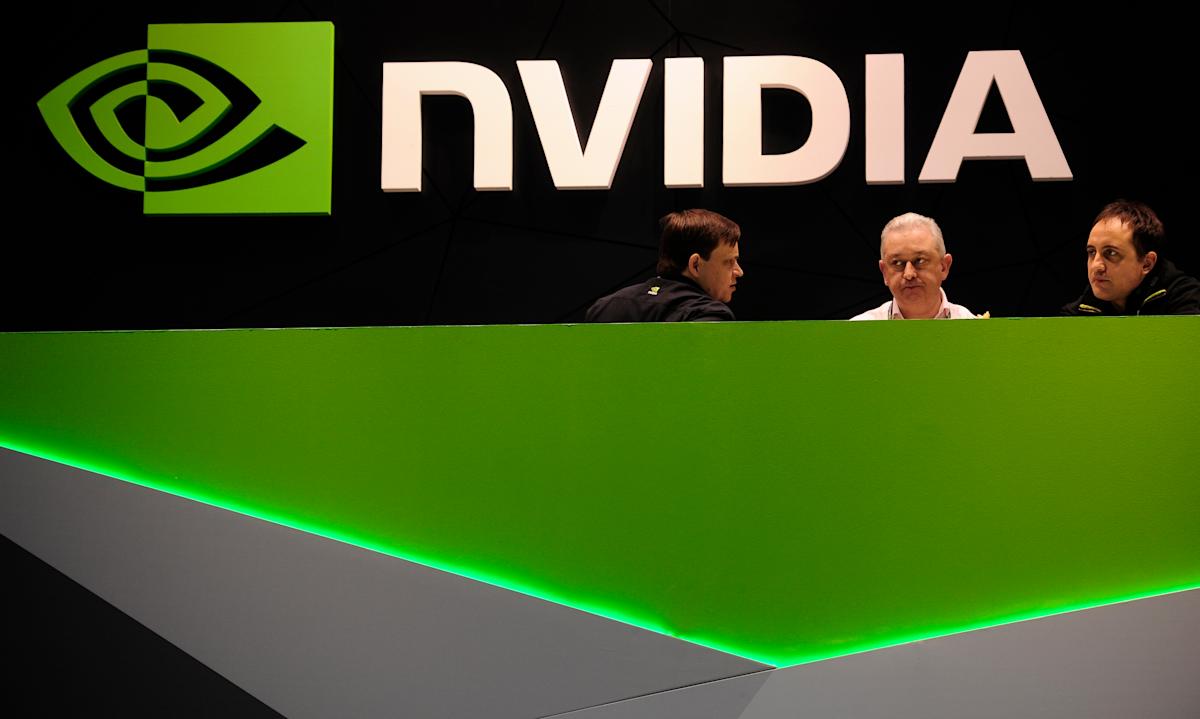Before you buy Nvidia, here’s what one expert wants you to know
Nvidia is reporting earnings on Wednesday. Of course, the AI chipmaker is the focus of the market most days. Nvidia (NVDA) is one of the so-called Magnificent Seven — the large-cap technology companies that generate the most interest and arguably the highest profits in the stock market, particularly the S&P 500 index (^SPX). The group includes Nvidia, Apple, Amazon, Google’s parent company Alphabet, Facebook’s Meta, Microsoft, and Tesla.
If you’re thinking about buying Nvidia, a portfolio manager says consider also buying dozens of other stocks just like it.
Here’s why.
Investing has become a mainstream American effort to build financial security, even among low- and moderate-income households. More than half (54%) of such households surveyed said they invest in the capital markets, according to a recent survey by BlackRock Foundation and Commonwealth.
However, the survey also highlighted the top challenge of newer investors: not knowing what to invest in and concerns about risk.
David Krakauer, senior director of portfolio management at Mercer Advisors, suggests investors should search for a great stock like Nvidia — and multiply it.
“I think you first need to define what it is you believe drives long-term returns in equities,” Krakauer said in a Yahoo Finance interview. “If you believe it’s profitability or value, like book-to-value, momentum, whatever those characteristics are that you look for in stocks and you believe are helping to define the outlook, then why pigeonhole yourself into just a few stocks?”
He believes investors can mitigate risk by screening multiple stocks that mirror the fundamentals, matching their investment philosophy.
“We could debate all day long on what fundamentals to look at, but let’s just assume investors know what they’re doing,” he added. “Why just one? Why not buy 10, 20, 30, 40, 50, 100 stocks that look good according to momentum or look good according to profitability?”
Read more: Create a stock investing strategy in 3 steps
“Is it riskier to have a portfolio of, say, seven stocks than it is to have something a little more broad? So if we’re defining risk simply as standard deviation, the volatility of your portfolio, then absolutely,” Krakauer said.
“The fewer stocks you have, the more volatile and greater the swings are in the value of your portfolio. So that’s one measure of risk,” Krakauer added. “Systematic risk is the risk of the equity market in general. And you usually get paid for systematic risk. You want exposure to the equity market.”
What you don’t get paid for, Krakauer believes, is non-systematic or idiosyncratic risk. That’s the risk of holding a small number of equities. He uses Tesla (TSLA) as an example.
“Idiosyncratic risk would be the idea that Elon Musk is going to wake up tomorrow and make a wild decision. Maybe it’s an announcement about something that is a risk because of Elon Musk. So that’s a risk you’re taking with Tesla. If you’re concentrated in Tesla, that doesn’t pay you.”
Krakauer believes that the average investor should focus primarily on financial planning above all else. Their investment portfolio needs to be constructed to increase the probability of success in meeting those financial goals, such as retirement.
Low-cost, passive, and highly diversified exposure to markets with exchange-traded funds is the right approach for most investors, he added.
“You could do the best research in the world on a stock. All the fundamentals may line up with your investment philosophy; the technicals look attractive. But no one knows what any individual stock is going to do over the next month, over the next six months, over the next year. So that is why it is essential to have diversification across many stocks,” he said.
Read more: 5 best questions to ask your financial advisor in the new year
One of the biggest challenges of running an individual stock portfolio is taxes, and ETFs can also help minimize the tax burden, Krakauer said, because investors should consider portfolio performance net of taxes.
ETFs rarely make capital gains distributions, unlike mutual funds. Another benefit of ETFs: avoiding the wash sale rule. That’s when an investor wants to claim a loss on a stock to offset the gain on another for tax purposes. If they buy a “substantially identical” security within 30 days, the tax break is disallowed.
However, investors can sell one ETF fund and replace it with another that tracks a different but similar index, allowing them to take the tax loss.
“So using ETFs that allocate and can reconstitute the portfolio for you under the hood without a taxable event is absolutely key to this,” Krakauer said.



Leave a Comment
Your email address will not be published. Required fields are marked *